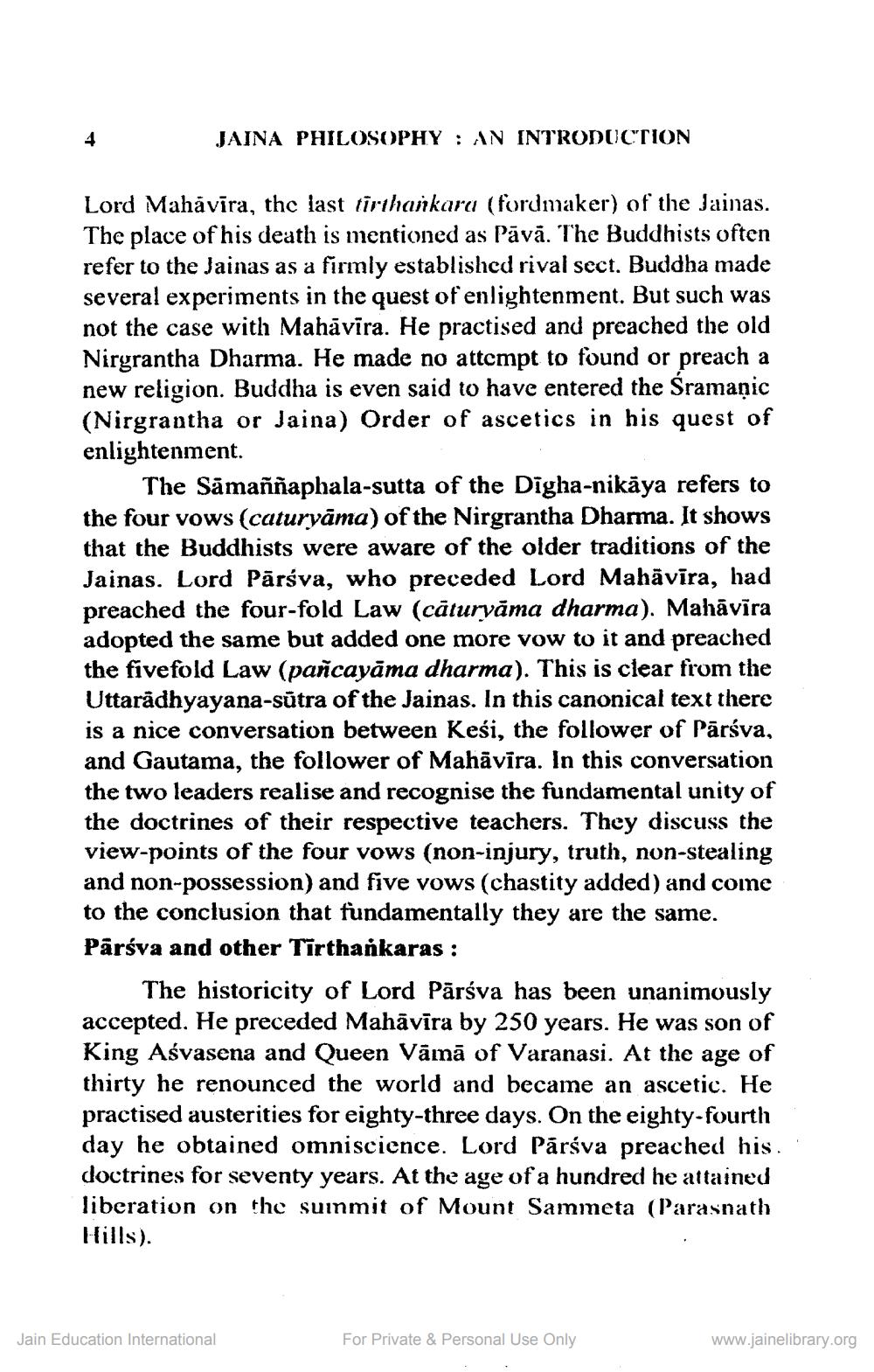________________
JAINA PHILOSOPHY : AN INTRODUCTION
Lord Mahavira, the last tirthaikaru (fordmaker) of the Jainas. The place of his death is mentioned as Pāvā. The Buddhists often refer to the Jainas as a firmly established rival sect. Buddha made several experiments in the quest of enlightenment. But such was not the case with Mahāvīra. He practised and preached the old Nirgrantha Dharma. He made no attempt to found or preach a new religion. Buddha is even said to have entered the Sramaņic (Nirgrantha or Jaina) Order of ascetics in his quest of enlightenment
The Sāmaññaphala-sutta of the Digha-nikaya refers to the four vows (caturyāma) of the Nirgrantha Dharma. It shows that the Buddhists were aware of the older traditions of the Jainas. Lord Pārsva, who preceded Lord Mahāvīra, had preached the four-fold Law (cāturyāma dharma). Mahāvīra adopted the same but added one more vow to it and preached the fivefold Law (pañcayāma dharma). This is clear from the Uttaradhyayana-sūtra of the Jainas. In this canonical text there is a nice conversation between Kesi, the follower of Pārsva, and Gautama, the follower of Mahāvīra. In this conversation the two leaders realise and recognise the fundamental unity of the doctrines of their respective teachers. They discuss the view-points of the four vows (non-injury, truth, non-stealing and non-possession) and five vows (chastity added) and come to the conclusion that fundamentally they are the same. Pārśva and other Tīrthankaras :
The historicity of Lord Pārsva has been unanimously accepted. He preceded Mahāvīra by 250 years. He was son of King Aśvasena and Queen Vāmā of Varanasi. At the age of thirty he renounced the world and became an ascetic. He practised austerities for eighty-three days. On the eighty-fourth day he obtained omniscience. Lord Pārsva preached his. doctrines for seventy years. At the age of a hundred he attained liberation on the suinmit of Mount Sammeta (Parasnath Hills).
Jain Education International
For Private & Personal Use Only
www.jainelibrary.org




